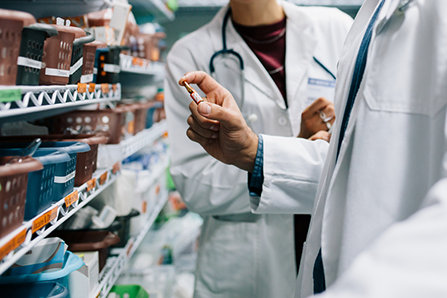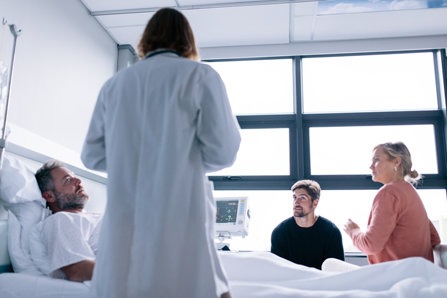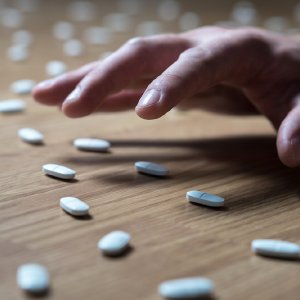Could Hospitals Institute Policies for Non Opioid Pain Management?

For decades, drug addiction has been a problem in the United States. We continuously see the daily headlines of terror and trauma relating to addiction. We are inclined to think that this is a new problem. In actual fact, this is not a new problem at all. There is just more of the problem. Drug addiction is more severe in the U.S. than it ever has been in our history, and that’s why we see the epidemic on national news almost every day.
I said that drug addiction is not a new problem, but there are aspects to the drug problem which are new, such as the pharmaceutical drug addiction epidemic. More specifically, the phenomena of legitimate patients taking pharmaceutical opioid pain relievers precisely as intended and then becoming addicted to those same drugs is a new problem.
How Did That Happen?
In the late 1990s, pharmaceutical manufacturers began to mass produce opioid pain reliever drugs. Pharma company representatives visited doctors all across the nation, hard-selling doctors to prescribe these new “miracle cures” for physical pain. Doctors listened, accepted the sales pitch, and began to prescribe opioid pain relievers en masse.
The result was that millions of Americans became addicted to the very drugs that were supposed to help them. The pharma reps promised doctors that these drugs were not addictive, and doctors passed that assurance on to patients. Even patients who took opioid painkillers exactly as prescribed became addicted to the drugs. It wasn’t the doctor’s or the patient’s fault; it was merely the nature of the addictive painkillers and the manipulative, untruthful nature of the pharma companies that made them.
As a side note, several of the drug manufacturers and distributors which made these drugs are now going through class-action lawsuits for their unlawful, completely criminal efforts to push their addictive drugs on the American people. Just some of the companies that stand to lose tens, even hundreds of millions of dollars as a direct result of their crimes are:
- McKesson, the drug distribution giant, sued for sending mass quantities of opioids to communities that didn't need them in West Virginia and across Appalachia.
- Johnson & Johnson, a drug company that makes several opioid drugs (and which makes drugs for getting people off of opioids, interestingly enough) for oversupplying the State of Oklahoma with opioids.
- Purdue Pharmaceuticals faces a $270 million lawsuit for creating, distributing, and lying about OxyContin, a powerful, addictive painkiller that has single-handedly killed tens of thousands of Americans since the turn of the century.
Research from the University of Pittsburgh

The University of Pittsburgh was able to prove that one of the primary ways by which non-addict patients end up becoming addicts is by being exposed to opioid pain relievers in a hospital setting. Patients go to the hospital for a surgery or for an ER visit for an accident and are given the opioid medication that they become addicted to.
The University of Pittsburgh Medical Center reported extensively on this, offering insight into how people become addicted to opioid drugs. The UPMC data indicates that patients who receive opioids for the first time while in the hospital are at double the risk for continuing to use opioids in the months following discharge as compared to hospitalized peers who are not given opioids at all during their stay. The data indicates that hospitals should be far more conservative in their opioid prescribing whenever they can.
“I was surprised by the level of opioid prescribing to patients without a history of opioid use. About half of the people admitted to the hospital for a wide variety of medical conditions were given opioids…”
According to the lead study author, Dr. Julie Donohue, a medical expert who works in the Department of Health and Policy Management: “I was surprised by the level of opioid prescribing to patients without a history of opioid use. About half of the people admitted to the hospital for a wide variety of medical conditions were given opioids. The stability of this prescribing also was surprising. Nationally and regionally, as people have become more aware of how addictive opioids can be, we’ve seen declines in outpatient opioid prescribing. But we didn’t see that in inpatient prescribing.”
The researchers examined the electronic health records of no less than 191,249 hospital admissions, all of whom had not been prescribed any opioid drugs in the year prior to their admission. Of the 191,249 patients, 48 percent of them were put on painkillers while in the hospital.
When the same medical records for those 191,249 patients were examined three months later, six percent of the patient group who had received opioids in the hospital were still on opioids, whereas only three percent of the patients who had not received opioids in the hospital were currently taking opioids.
Could hospitals be inadvertently exposing patients to pharmaceutical gateway drugs? Could hospitals be creating addicts while trying to help patients?
Very few medical complications treated in hospitals are so severe that one would still need opioid painkillers three months after a visit to the hospital. Is it possible that, by putting patients on opiate meds to help them with their pain, hospitals are inadvertently exposing patients to a drug they might become dependent on? That certainly seems to be the case.
How Else Could Hospitals Address Patient Pain? Are Opioids the Only Answer?

There's a good deal of material to consider here: the information from UPMC; the knowledge we now have about opioid pain relievers; the hundreds of millions of dollars drug companies are paying to settle lawsuits in shame to avoid a public trial; the sheer death toll (about 218,000 deaths since 1999) caused by opioid painkillers as reported by the Centers for Disease Control and Prevention. It all leaves us wondering what hospitals must do going forward to reduce patient exposure to opioids.
Another point is the need for hospitals to implement and enforce policy on informed consent. If opioids seem necessary, the attending physician must have a very serious talk with the patient about the risks attendant with opioids. Then the patient can make a decision whether or not to have the doctor prescribe them. All too often this critical component is left out and patients are not appropriately informed on what the doctor is about to put in the patient's body.
While we personally cannot give medical advice and don’t pretend to, certainly the medical experts who run hospitals could make use of alternatives to opioid pain relievers for their patients. The risk of using opioid painkillers is addiction. The risk of not using opiate meds is temporary pain, which can likely be assuaged through alternative approaches, holistic medicine, hands-on techniques, etc.
If you have to go to the hospital for a medical crisis or have a family member or loved one who does, try to keep the use of opioids to an absolute minimum. It might make the difference between addiction and sobriety.
Sources:
- https://www.nytimes.com/2019/05/02/health/mckesson-opioids-west-virginia.html
- https://www.npr.org/2019/06/03/728296308/johnson-johnson-under-fire-has-track-record-of-weathering-trouble
- https://www.nytimes.com/2019/03/26/health/opioids-purdue-pharma-oklahoma.html
- https://www.upmc.com/media/news/061719-donohue-inpatient-opioid
- https://www.cdc.gov/drugoverdose/data/prescribing.html
Reviewed and edited by Claire Pinelli, ICAADC, CCS, LADC, RAS, MCAP


